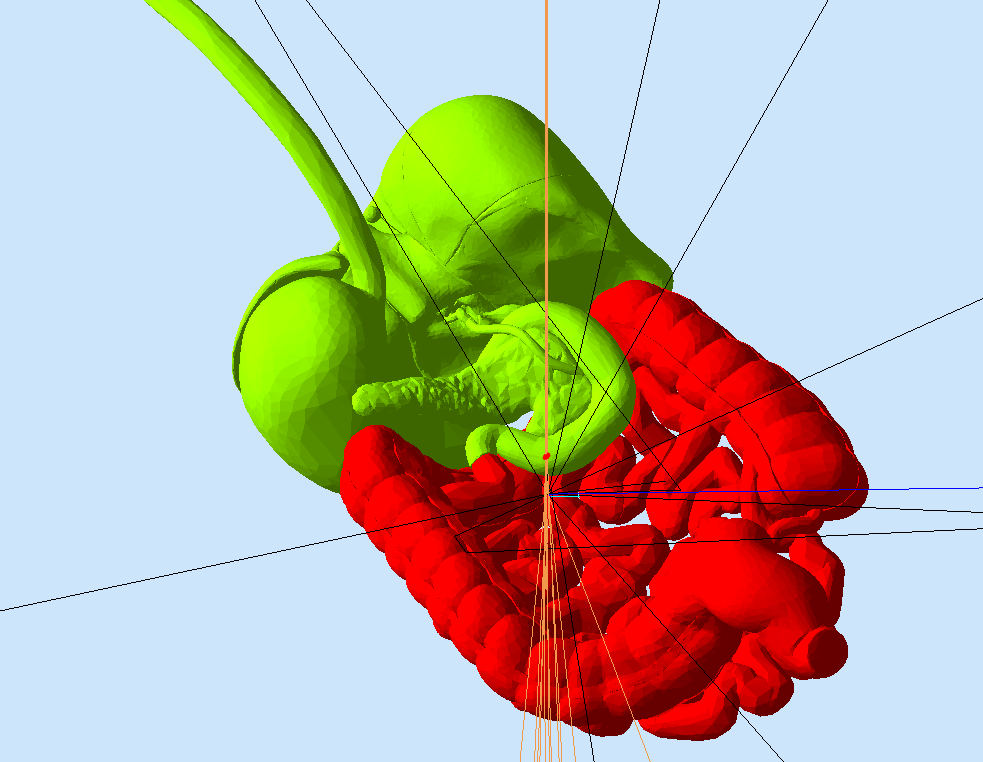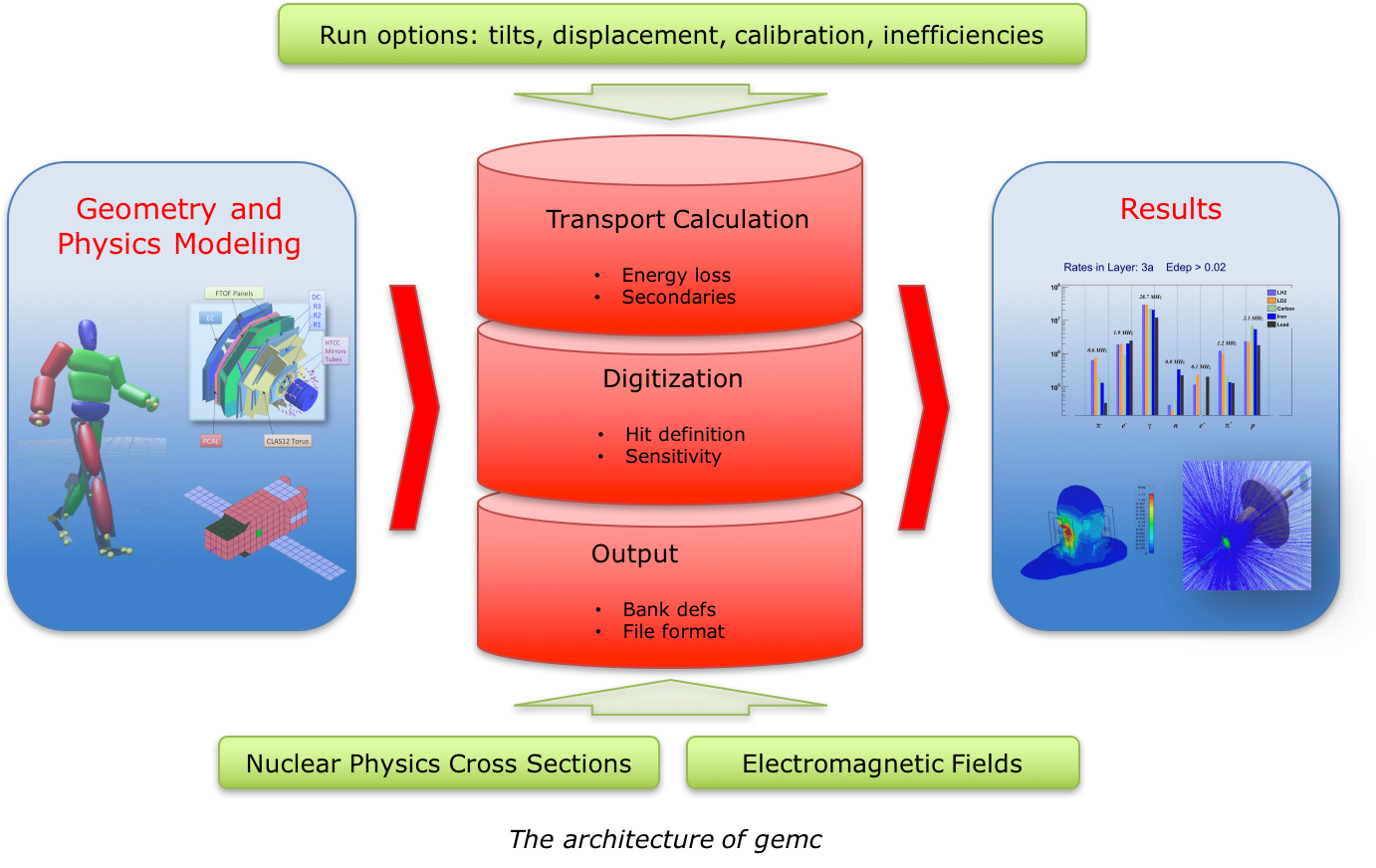GEant4 Monte-Carlo¶
GEMC is a c++ framework that uses geant4 to simulate the passage of particles through matter. It provides:
application independent geometry description
easy interface to build / run experiments
cad/gdml imports
Overview¶
gemc makes easy things trivial and hard things possible.
Users can build or import from cad complex setups with minimal programming knowledge. See for example how to build a TOF with few lines of code or how to import TOF from cad.
Experiments can be loaded using a combination of these factories:
MYSQL
TEXT
GDML
CAD (STL, PLY, OBJ formats)
C++ Plugin


gemc can import models from CAD and GDML. Left: the upper gastrointestinal system is modeled in CAD. It can be imported in GEMC and made it sensitive so that radiation doses can be measured. Right: the mighty USS Enterprise NCC 1701-A (CAD) can be used to shoot protons torpedos at a dragon (CAD) while a GDML sphere is watching.
Simulations are application independent¶
Once the user defined setup is loaded, gemc translates it in geant4. This includes:
geometry
materials
mirrors
physics list
digitization
electromagnetic fields
All particles are transported through matters and produce radiation, hits, secondaries. gemc then collects the geant4 results and produce the output specified by the user.

Open source¶
gemc is open source. Please visit the contributing to gemc page if you’re interested in the code development.
If you have any bug/code optimization to report, new ideas, features request, please open a code issue / feature request in github.



